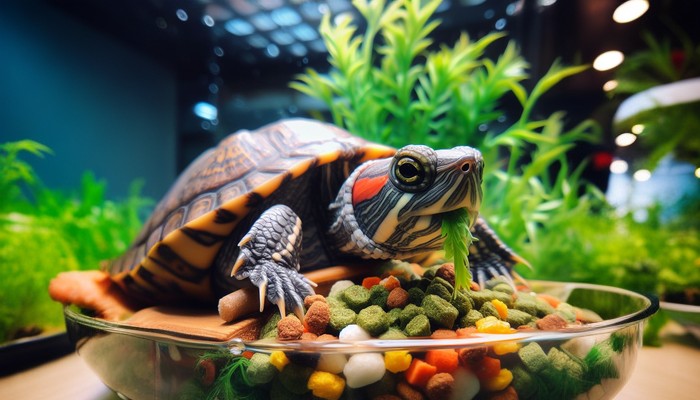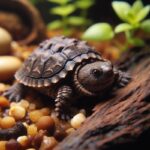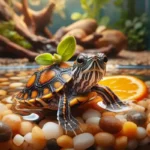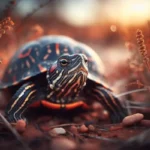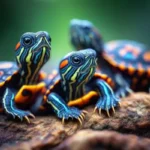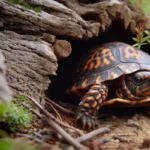Ah, the red-eared slider turtle – an intriguing aquatic companion that brings joy to countless households.
However, as a responsible pet owner, you know that the key to your slider’s happiness lies in their well-being.
And what’s the cornerstone of their health? You guessed it – Red-Eared Slider Turtle Food!
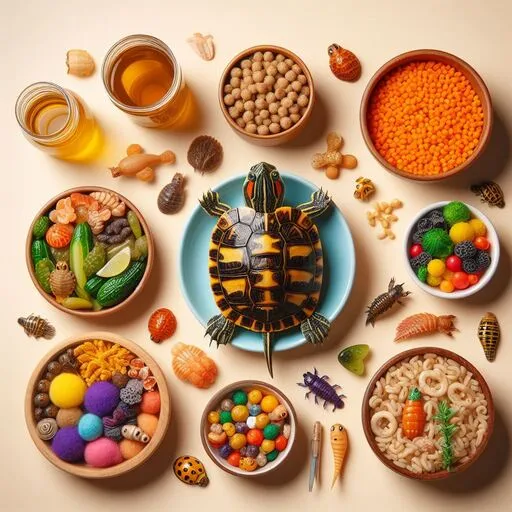
So, strap in as we embark on a culinary adventure through the world of these captivating creatures.
We’ll delve into their unique nutritional requirements, the array of food options they can enjoy, the art of crafting a well-timed feeding schedule, and, naturally, essential advice to ensure their diet remains balanced and nourishing.
Nutritional Needs of Red-Eared Sliders
Macronutrients: proteins, fats, and carbohydrates
For red-eared sliders to stay healthy, it is essential to provide them with a balanced diet that includes proteins, fats, and carbohydrates.
Proteins are particularly significant for their growth and development, while fats deliver necessary fatty acids and energy.
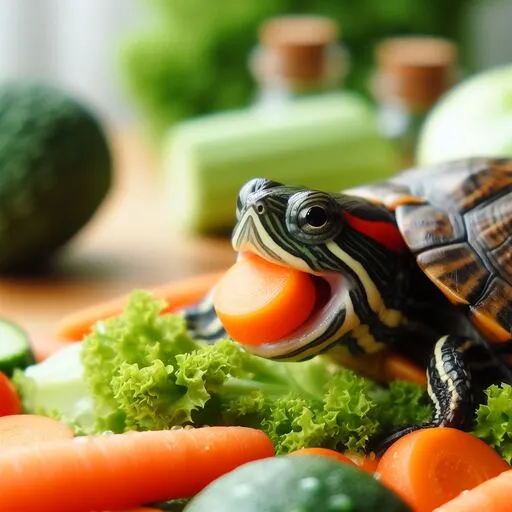
Carbohydrates should be given in moderate amounts, as an excess can cause obesity and other health complications.
Micronutrients: vitamins and minerals
In addition to macronutrients, red-eared sliders also require various vitamins and minerals to support their overall health.
Several crucial micronutrients to consider include
- Calcium: essential for strong shells and bones
- Vitamin A: important for eye health
- Vitamin D3: aids in calcium absorption
The role of fiber in a red-eared slider’s diet
While fiber may not be the first thing that comes to mind when considering turtle nutrition, but it plays a vital role in maintaining a healthy digestive system.
Providing your red-eared slider with a diet rich in fiber can help prevent constipation and promote regular bowel movements.
Types of Food for Red-Eared Sliders
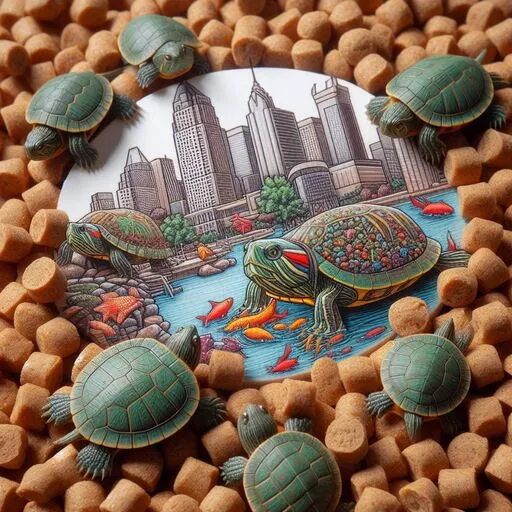
Commercial turtle pellets
Commercial turtle pellets are a popular choice among red-eared slider owners due to their convenience and balanced nutrition.
These pellets are formulated to meet the specific dietary needs of aquatic turtles, making them an easy option for busy pet owners.
- Benefits and drawbacks One of the benefits of commercial turtle pellets is their balanced nutrition. However, it’s essential to supplement these pellets with fresh vegetables and occasional live or frozen prey to ensure a varied and well-rounded diet.
- Recommended brands Some top-rated brands for red-eared slider turtle food include ReptoMin, Mazuri, and Omega One. Be sure to choose a pellet that is specifically formulated for aquatic turtles, as they have different nutritional requirements than terrestrial species.
Fresh vegetables and greens
Best choices for red-eared sliders
A diet rich in fresh vegetables and greens is essential for your red-eared slider’s health.
Some excellent options include:
- Leafy greens: kale, collard greens, and dandelion greens
- Vegetables: bell peppers, carrots, and squash
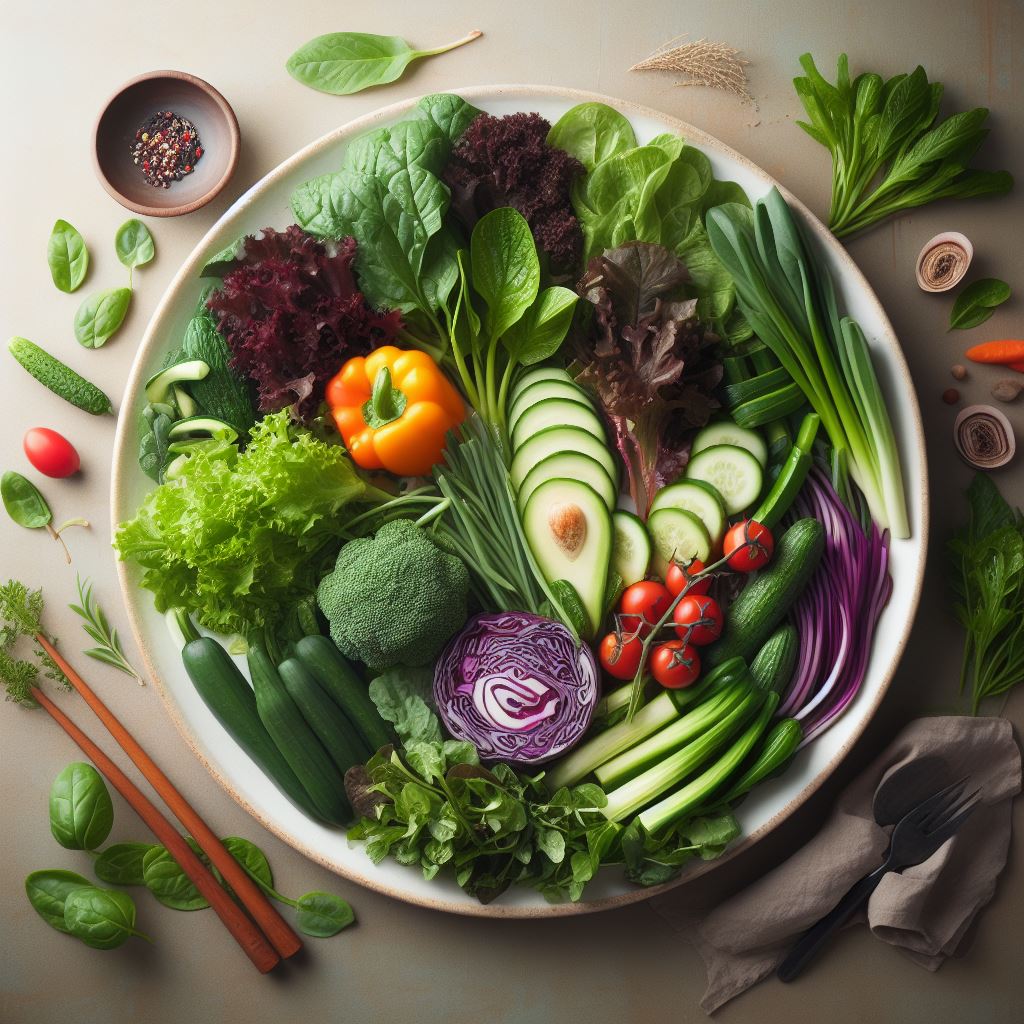
Avoid iceberg lettuce, as it has minimal nutritional value.
How to prepare and serve
Rinse vegetables and greens thoroughly before feeding them to your turtle.
You can either chop them into bite-sized pieces or leave them whole for your red-eared slider to nibble on.
Some turtles may prefer their veggies slightly cooked or blanched, but most will happily eat them raw.
Live and frozen prey
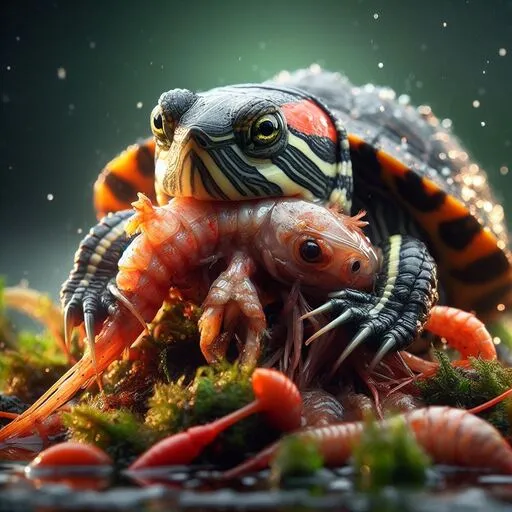
Types of suitable prey
Red-eared sliders are omnivores, meaning they eat both plant and animal matter.
In the wild, they would naturally consume a variety of live prey, such as insects, worms, and small fish.
To mimic this diet, you can offer your turtle live or frozen prey like crickets, mealworms, earthworms, and feeder fish.
Importance of variety in the diet
Providing a variety of live and frozen prey will help ensure that your red-eared slider receives all the necessary nutrients and prevent them from becoming bored with their diet.
Rotate between different types of prey and vegetables to keep things interesting for your aquatic friend.
Feeding Schedule and Portion Sizes
Feeding frequency based on age and size
- Young red-eared sliders: Feed daily to support their growth and development.
- Adult red-eared sliders: Feed every other day or every three days, depending on their size and activity level.
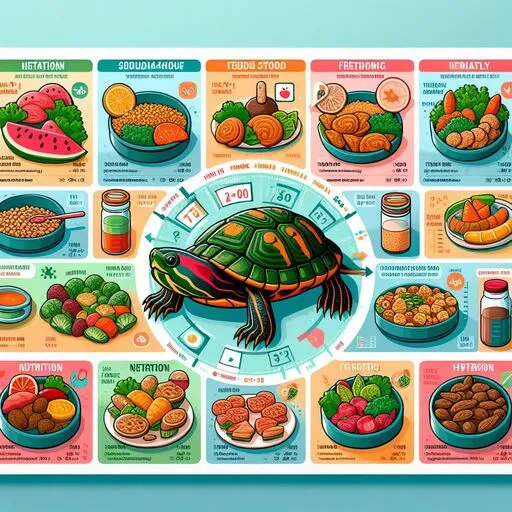
Adjusting portion sizes and diet composition according to age and size
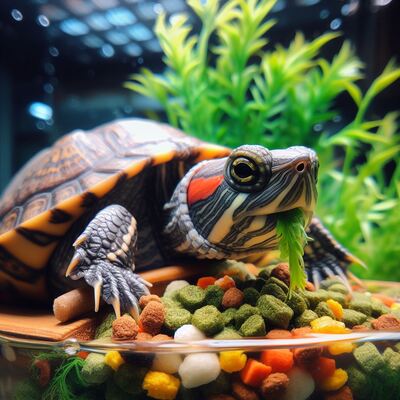
- Younger turtles: Their diet should consist of approximately 70% animal matter and 30% plant matter, as they require more protein for growth.
- Adult turtles: Gradually shift to a more plant-based diet, with around 75% plant matter and 25% animal matter.
Monitoring your turtle’s growth and health
Regularly observe your red-eared slider’s growth and overall health, adjusting their diet as needed.
Consult with a reptile-specialized veterinarian if you notice any signs of illness or sluggishness.
Tips for Encouraging a Healthy Diet
Rotating food items for variety
To keep your red-eared slider interested in their food, try rotating between different types of vegetables, greens, and live or frozen prey.
This not only provides them with a varied diet but also helps ensure they receive all the necessary nutrients.

Supplementing the diet with vitamins and minerals
While a well-rounded diet should provide most of the vitamins and minerals your red-eared slider needs, you may want to consider adding a calcium supplement or multivitamin to their food.
This can be especially beneficial for younger turtles, who have higher calcium requirements for shell and bone growth.
Ensuring a clean and suitable environment for feeding
A clean and comfortable environment is essential for your red-eared slider’s overall health and well-being.
Be sure to maintain proper water quality, temperature, and lighting in their habitat, as these factors can significantly impact their appetite and digestion.
Common Diet-Related Health Issues
Overfeeding and obesity
Overfeeding can lead to obesity, which can cause various health problems for your red-eared slider.
Pay attention to the size of portions and the regularity of feedings to avoid overfeeding.
Nutrient deficiencies
A diet lacking in essential nutrients can result in health issues such as metabolic bone disease, vitamin A deficiency, and other problems.
Providing a varied and balanced diet can help prevent these issues.
Addressing picky eaters
Some red-eared sliders can be picky eaters, which can make providing a balanced diet a challenge.
Experiment with different types of food and presentation methods to entice your turtle to eat a wider variety of items.
Conclusion
Embarking on the journey of ensuring your red-eared slider’s well-being starts with understanding their dietary needs.
Diving into the world of nutrition, one must provide an array of food choices to satisfy their appetite.
Witness your aquatic companion flourish as you monitor their growth and health, creating the perfect habitat for them to prosper.
So, revel in the joy of nurturing your red-eared slider with the finest diet, and cherish the bond with your thriving, contented pet for countless years to come.
